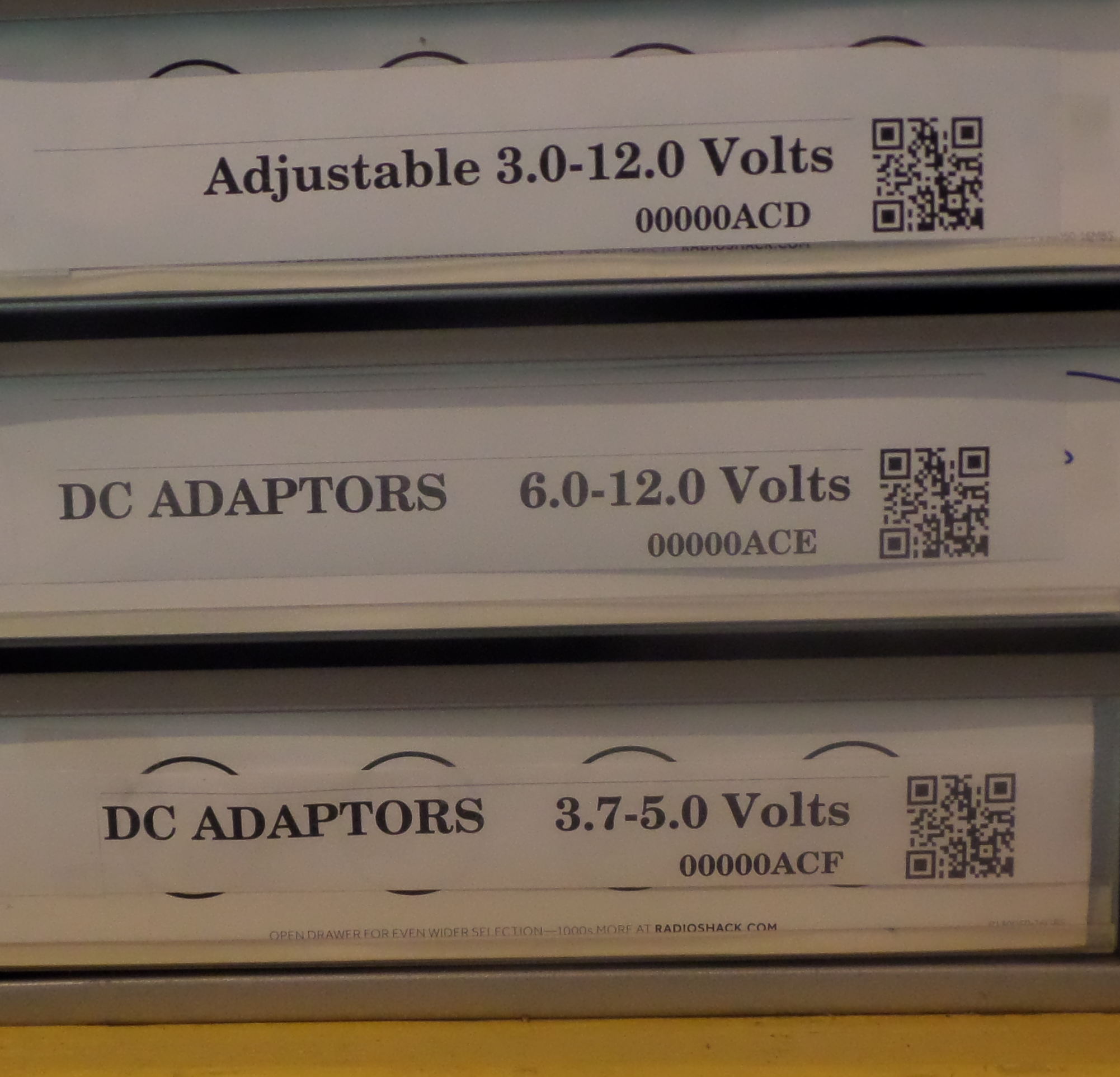
Last Christmas I employed my daughter to help me get the upper hand on my component inventory. We made some progress, but the one thing that came out of it was a vision for an effective setup. This would combine machine vision, recognizable codes like QR codes and bar codes, RFIDs and other means of “advertising” the contents of all the nooks and crannies of my shop.
The high point last winter was to take good photos of the spines of a set of books in boxes and cross-reference those to QR codes on the box sides before putting them in the attic. Now I can just point my smart phone at the box and tap the recognized code to get a high res photo of the contents to decide if that’s the 50 pound one I want to lug out and rummage through. (The picture above has QR codes that all point to a simple URL that was to do with an early test they aren’t in use)
Emily and I got every loose resistor I owned into coded envelopes but about this time the priority of this part of the “shop development” became less important than other things. I got a couple decent cameras that would tie into the house server (an Odroid C1 running Ubuntu 14.04) and I at least got it clear in my mind what I wanted o end up with, which is a way to effectively put the information about the contents of a drawer there with the contents, and ideally, information about a tool with the tool. I even got a cheap tablet running Android thinking that this would be the easiest thing to have in the shop that I could arrange to have large docs and databases cached inside for fast response. Around this time the shop got just useful enough and demands on time just urgent enough that the super-automation project went onto a back burner.
Anyway, fast forward to this month’s informal “Raspberry Pi, Arduino and Friends” get together at Splatspace (Durham Hackerspace: the ideal place to send your smile dollars by visiting their donation page and clicking on the donate or Amazon Smile graphics). I had brought back some Raspberry Pi project books from England and thought I’d introduce the group to the notion of an “IBeacon”. I fumbled through this because I hadn’t read the article or tried it out on a Raspberry Pi before I got there and we started the whole thing too late to really do anything.
But IBeacons are designed to be app-centric, which is only mildly annoying, but app-per-beacon-type, which severely annoys me, and cloud-centric, which begins to impact my religious beliefs (not really, but I mean my deepest seated bias about giving control of important resources to commercial interests with very fuzzy specifications but very very detailed EULAs focused on their needs, not ours).
More interesting for my shop is the notion of all my little bar codes, QR codes, RFIDs and active wireless gizmos constituting my local corner of a physical web. In my corner the information is entirely under my control, about 99.8{13079d06258ef9010cea88dee32f3cdfc6f216a54651010f7303ce6140ee927c} of the information relating to this corner resides here, not in the cloud, it’s simple enough that I can understand it, and it belongs to me with no strings attached (realizing that my datasheets are copyrighted, etc).
In coming months I expect to learn just enough about making apps for Android that I can make appliances for my phone (and a tablet) to coordinate qr-code recognition, Eddystone-URL beacons and the like. Also on the list is to combine the cameras with enough machine vision to be able to aim safely dim laser pointers at parts of my shop as I struggle with the perennial question: Where did I put those ___?
